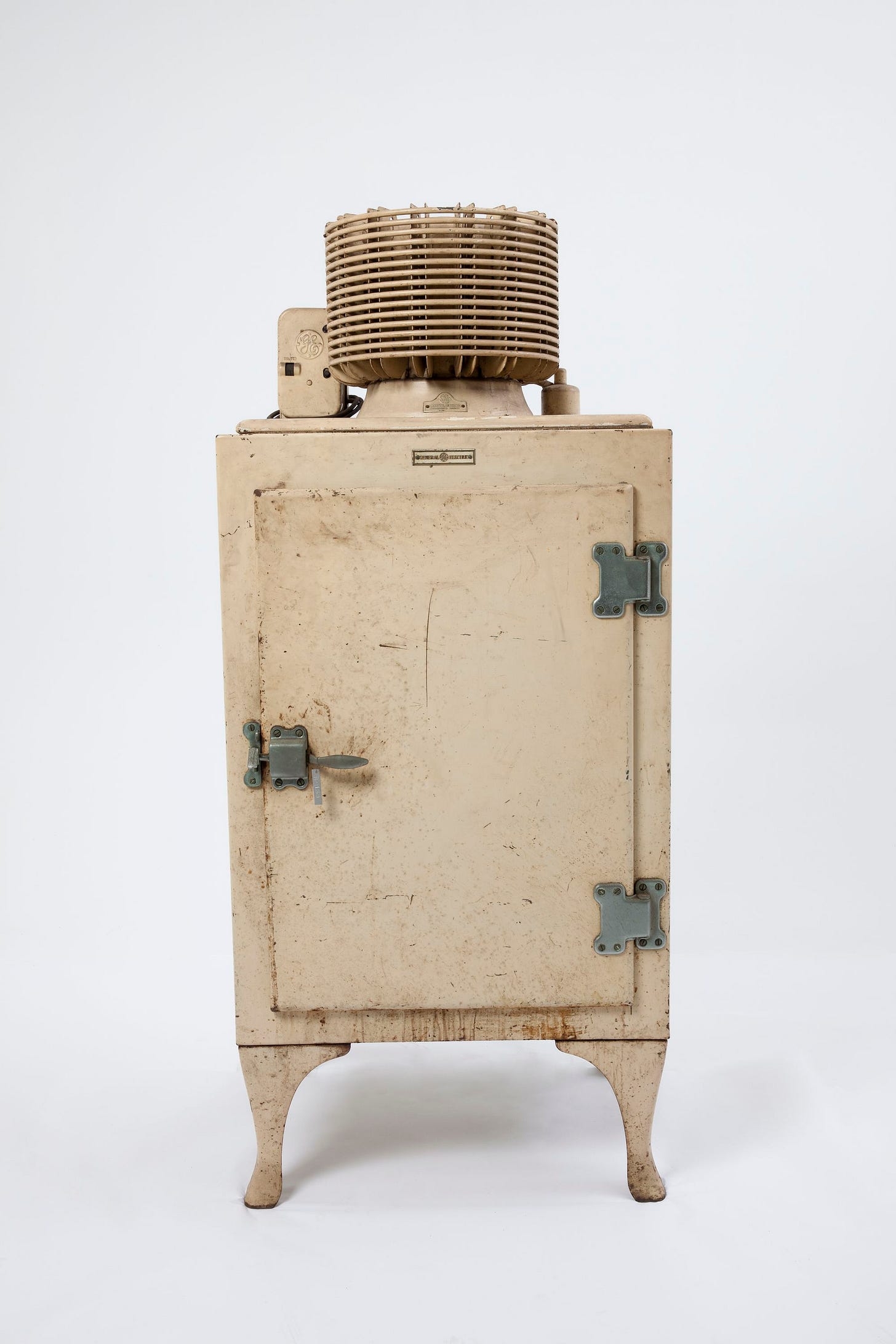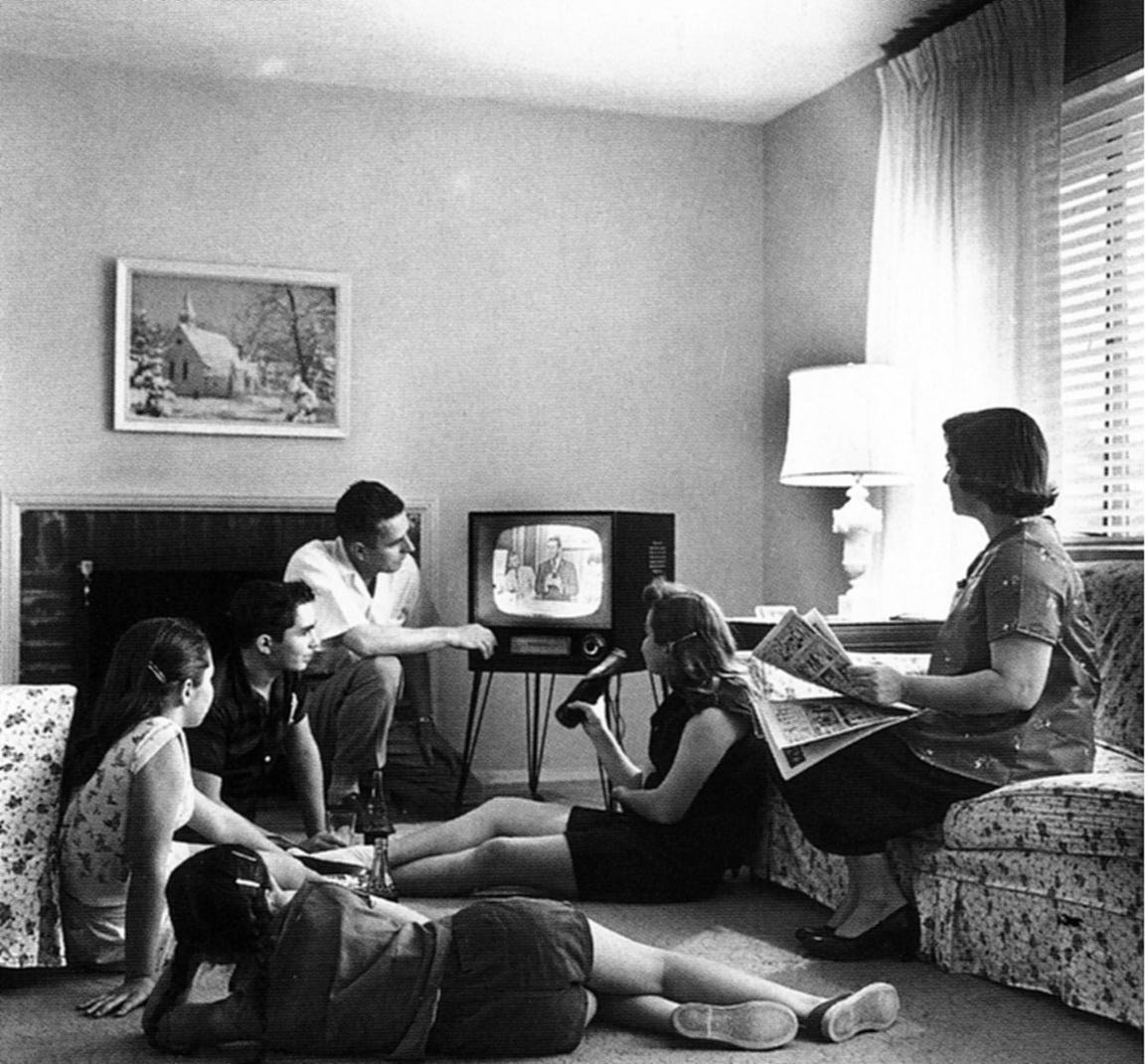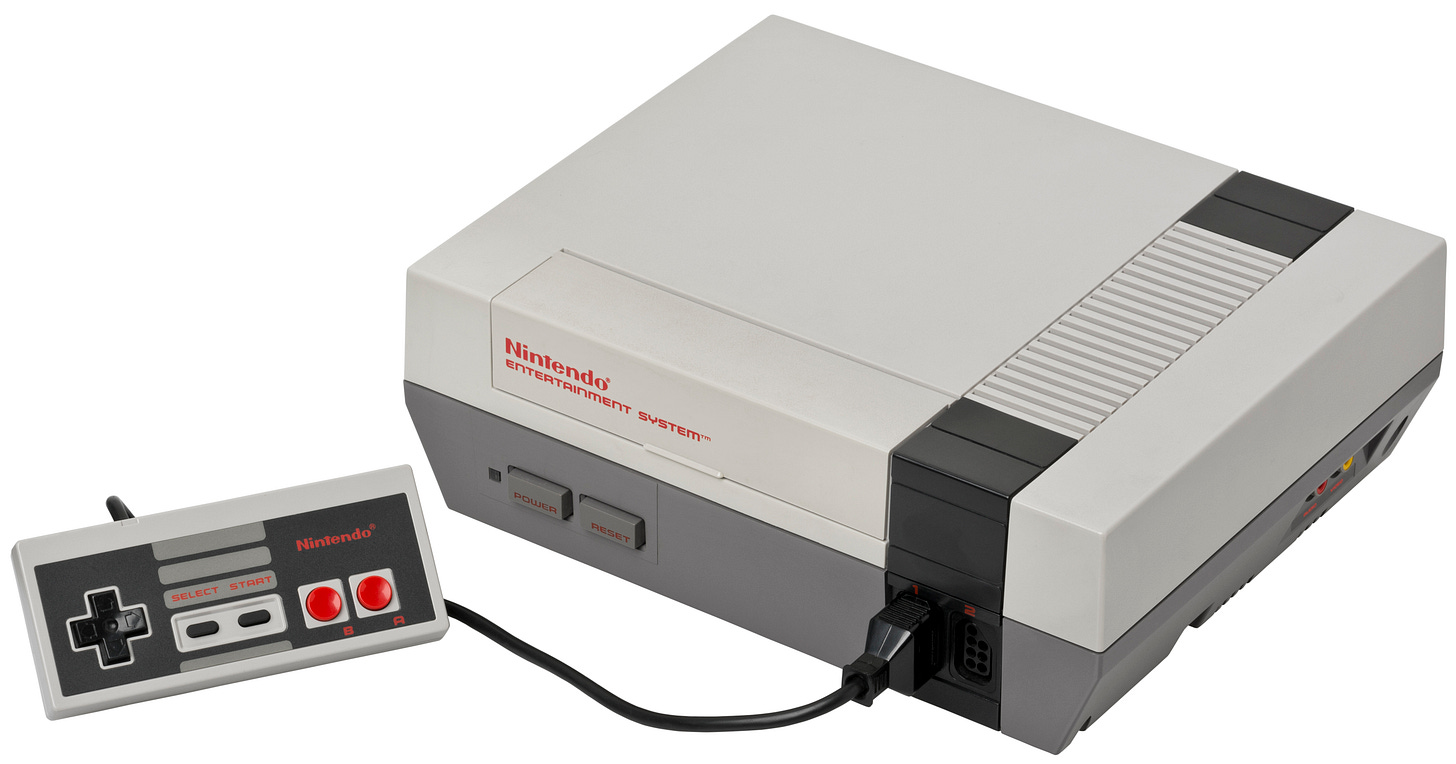A nerdy debate on how comfy a night in you could spend in 1930, 1960 and 1990
Things haven't changed nearly as much as we think, at least in terms of technology and useful household items

Western Electric B1 desk set rotary telephone, circa 1930. Photo Credit: Kbrose, Creative Commons 3.0.
The downside of taking a vacation is that the people who cover for you while you're gone are also allowed to take vacations. This week, my assistant editor at the National Post, the terrific Laura Morrison-Flint, was enjoying a hard-earned rest. This meant that my intrepid deputy Jesse Kline and yours truly had a lot to do. Compounding that, it was a busy week in the news, and my kids were at home with me — their Toronto public school doesn't open until next week. This is all intended as explanation for why Code 47 was silent this week. I just didn't have the time.
You'll still get your update note tomorrow, with some value-add at the top, but I also wanted to bring you into a little dispute I'm having with one of my oldest friends (an entirely amicable one, I stress). In the way that only old friends and history nerds can, we found ourselves getting into a weird detailed spat over a minor topic: how much did household life change during the 20th century?
It's a really specific question. We didn't mean societal or cultural changes. Those were obviously massive. We were debating very specifically what it was like inside a home. For reference, we assumed as our baseline a generally well-appointed middle-class home in North America. My friend argued that you saw major changes between say 1930 and 1990. My argument was that those changes were actually less profound than you'd think. As befits a spat between two very old friends over a nerdy, marginal issue, we were arguing more over the fine details than any real substantive differences. I said I’d agree with him almost entirely if he set his start date at around 1920.
But ... it's fun. So I'm sharing.
Again, a reminder, Code 47 readers — we are excluding social and cultural change. And since we are narrowly focused on household life, we're also excluding geopolitical issues or technological changes that don't particularly concern such household life. Rapid global air travel by jetliner, for instance, is excluded (not that anyone's doing much of that anyway these days, for, ahem, reasons). So let's think about this.
In 1930, a well-appointed middle-class home in North America would be electrified. It would have running hot and cold water. It would have a furnace or boiler for heating during the winter. The electricity that fed the home would be used, of course, for lighting, but it would also power useful household appliances. Electric vacuum cleaners were around decades before our 1930 date, starting in 1908. Clothes washing machines existed, too, though they were primitive — also dating to 1908, as it happens. (Dryers, interestingly, were not yet available — you'd be hanging your unmentionables out to dry.)
In the kitchen, you could have a refrigerator (invented 1913, and in widespread use by 1927), automatic pop-up toaster (1925), and a stove/oven, powered by gas or electricity. If you wanted a nice cup of tea, you had electric kettles (1922). For entertainment, you could put on the radio for news, sports or dramatic programs (the first commercial radio networks began operating in the 1920s). Or you could grab a record and play it on your phonograph (though vinyl wouldn't be widely used in record making until the 1930s).

A GE “monitor-top” refrigerator, produced 1927. Credit: Museum of Applied Arts & Sciences, accessed Sept. 12 2020.
Feeling lonely? You could invite a friend over by telephone, and they could drive right over in their car — both technologies that were in heavy use even by the North American middle-class in 1930.
Dishwashers are an interesting one — it's hard to pin down a firm date on these, because there were so many competing versions. For our purposes here, we can say that a well-appointed North American middle-class home circa 1930 may have had a dishwasher, but probably can't say that they likely would have owned one. I think this one is right on the bubble.
Still. This ... isn't bad? I'm not suggesting for an instant that you wouldn't miss some modern conveniences. But I'm saying that by 1930, you could enjoy a quiet, pleasant winter evening in, listening to music, reading by electric light and enjoying good food while staying toasty warm (and with a flush toilet!). Lots of people can't enjoy all those things even today.
Let's jump forward to 1960. There's changes, for sure, but I'd argue they're more incremental. Televisions had supplanted radio, but only by refining the same basic concept. You'd have more appliances in the kitchen able to help you whip up a meal, but, again, that's an incremental improvement. There'd be a lot of visual changes, with appliances and household items taking on a more recognizably modern form. And things would also be getting smaller and more convenient. But I'm not sure that a night in in 1960 is much more comfortable and appealing than in 1930. (Though you could toss your clothes into a dryer when the wash was done with them, and your chances of owning a dishwasher — including one with fancy drying coils — was way up.)
There is one major possible development, though, depending on geography and time of year: air conditioning. The basic science behind evaporative cooling had been known by the mid 1700s, and electric air conditioning (as we think of it) was possible very early in the 20th century. But routine, affordable household air conditioning (using window units) was a creation of the 1940s. So this is one possible way in which our scene of quiet domestic tranquility is vastly improved in 1960 relative to 1930: you can be reading quietly while a record plays in the background as comfortably in Savannah in July as you could in Boston in February.

A family watches television in 1958. Public domain image.
Our next 30-year-jump might be more controversial to many of you, especially since most of us actually can remember 1990 (if anyone subscribed to this list is actually younger than 30, I'd be surprised, to be honest). But I'd still contend that our comfortable homebody middle-class North American family isn't vastly better off spending that quiet night in 1990 than they are in 1960 or even 1930. Again, most of our technological changes are incremental rather than transformative. Appliances are, again, smaller and better and more recognizable. TVs are colour and have a better picture. Your music might now come off cassette or CD (but still may in fact come off a vinyl record). Your air conditioning is likely now a central system.
We are moving rapidly into the micro-electronics era (arguably, we're well into it by 1990), so there's definitely some new things. Video game systems would exist. Microwave ovens. You might have an early home computer for recreational or business use. But for that hypothetical quiet night in, there haven't been major changes since 1930. A person beamed from 1930 to 1990 would be wowed by some of the techno-doodads, but I think they'd recognize more than they didn't.

A Nintendo Entertainment System (NES), as released in North America in 1986. Public domain image.
I am obviously simplifying a lot. One of the things I've glossed over entirely are the staggering number of consumer products that would have been invented over this period, not just consumer appliances. Food is also going to be very different. Thanks to developments in food processing and global agricultural supply chains, your 1990s family is going to be eating a very different diet than your 1930s one (I won't take a position on which is better). And there have been innumerable developments over this period (and since) that have made life better in ways big and small, from personal hygiene products and cleaning supplies to medical devices and pharmaceuticals. And over this 60 year period of time, many of these devices and inventions have improved dramatically: they're smaller, lighter, more reliable and less expensive.
So don't mistake the above for an assertion that nothing has changed. For one thing, your quiet night in in 1930 and 1960, and maybe even in 1990, would have probably involved a whole hell of a lot more second-hand smoke, if not outright first-hand smoke, than you’d get in 2020. But purely as a thought exercise, it's interesting to consider, isn't it? We've probably seen more and more rapid changes to our household lives over the last 30 years than the 60 before it — possibly even the last 10 years. As I noted in a National Post column a year ago, "I was entirely without the internet, in any form, for the first third of my life. ... Ever-present high-bandwidth wireless internet has been a reality in only the most-recent third of my years, and my phone’s AI assistant has been around for only a few of those."
Much of our foundational, basic domestic technology hasn't changed much and likely won't. It's matured into stability. We aren't likely to meaningful improve on the design of a toaster or fridge or kettle. But still, I'd say the last 30 years have brought more and faster change to daily middle-class daily life than the 60 before it.
I wonder what the next 30 will bring.
Stay tuned tomorrow for a weekly recap, with a further musing on privilege at the top.
Do I know how to party or what?!
mgurney.responses@gmail.com
Twitter.com/MattGurney


